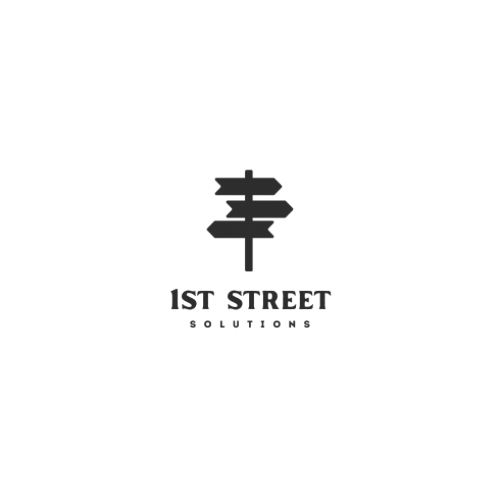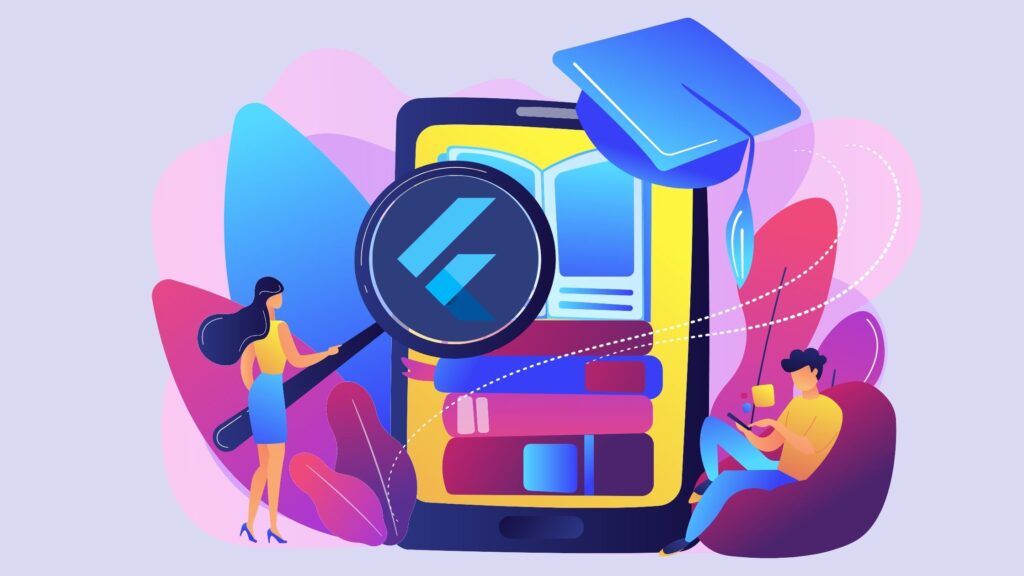In the fast-paced world of mobile app development, businesses and developers are constantly searching for tools and technologies that provide high performance, flexibility, and the ability to reach a broad audience. Flutter, an open-source framework created by Google, has emerged as a top choice for building mobile applications across multiple platforms. But why is Flutter so popular, and why should you consider it for your next mobile app project? If you’re working with a mobile app development company, understanding the advantages of Flutter could be a game-changer for your next app.
What is Flutter?
Developed by Google, Flutter is a UI toolkit meant to produce natively produced apps for desktop, web, and mobile from a single codebase. Flutter lets you create one codebase that operates on both iOS and Android devices, saving time and money, unlike alternative systems that demand developers to create separate code for several platforms. Developed by Google as well, the Dart programming language is well-known for its performance and modern conveniences.
Flutter is the Best Choice for Cross-Platform Mobile App Development
Flutter is often considered one of the best choices for cross-platform mobile app development, and there are several reasons why it stands out in this space:
1. One Codebase, Multiple Platforms
The ability of Flutter to let you create a single codebase running on several platforms is among its most important benefits. Since you don’t have to create separate code for Android and iOS, this function greatly lowers development time and effort.
Separate codebases are needed for every platform in conventional app development, which drives more time for maintaining the code, testing, and writing. Flutter does away with the necessity for this redundancy. You once wrote the code, and it runs unaltered on both systems. For startups and businesses with limited resources, specifically, this saves engineers a lot of time.
2. Fast Development Cycle
The “hot reload” function of Flutter speeds and simplifies the development process. Without a complete restart, Flutter immediately shows changes you make to the code in the app. This lets developers easily experiment with the UI, test fresh features, and address errors.
In the competitive world of today, where time-to-market could make all the difference between success and failure, the rapid development cycle is vital. Reducing development time lets Flutter enable developers to deliver apps faster, obtain user comments sooner, and apply changes rapidly depending on actual use.
3. Excellent Performance
Mobile apps always give performance first importance, hence Flutter is not disappointing. Unlike previous cross-platform systems, which interface with the native code of the platform using web views or bridges, Flutter gathers straight from native ARM code. This lets Flutter apps run quicker and more effectively than competing cross-platform substitutes.
The Skia image Engine is used by Flutter to create the UI, therefore guaranteeing flawless animations and premium images. The software performs like a native app, and users won’t run across lag or delays, often the outcome of employing less-performant cross-platform systems.
Furthermore, built for great performance is the programming language Flutter uses, Dart. Dart compiles to native code so that Flutter apps may run at native app speed while preserving seamless UI rendering. For uses requiring performance-critical tasks, Flutter is thus a great choice.
4. Highly Customizable UI
Rich set of pre-built widgets offered by Flutter lets developers design exquisite, customisable user interfaces. From basic buttons and text fields to sophisticated layouts and animations, the framework consists in a great range of UI elements. These completely customisable widgets allow developers the freedom to produce distinctive and interesting app designs that stand out.
Flutter’s design ideas help developers to create apps consistent across both platforms and adhere to both Android and iOS design standards without making it more difficult. Creating aesthetically pleasing apps is much easier with Flutter’s large array of UI features and ability to alter widgets to fit certain needs.
5. Cost-Efficiency
For companies, creating apps for several platforms may soon add up. Businesses can cut maintenance and development expenses with Flutter. Development of apps on several platforms is far less expensive since you just need to create one codebase for iOS and Android.
Furthermore, businesses may better allocate their resources as they don’t have to assemble distinct teams for iOS and Android development. Since there is only one codebase to update, Flutter also lessens the requirement for continuous maintenance since it guarantees that the app stays current across both platforms with the least effort.
6. Strong Community Support
There is a dynamic and expanding community behind flutter. This community provides a wealth of open-source packages and plugins as well as tutorials and thorough documentation. Whether your technical obstacle is integrating a certain feature or you require a library, chances are someone in the Flutter community has already solved the issue or developed a plugin to fit your demand.
Support from Google and the community guarantees Flutter’s ongoing development and enhancement. From startups to big companies, a wide spectrum of developers and companies have embraced the framework, establishing it as one of the most reliable instruments for cross-platform mobile app development.
7. Easy Integration with Native Features
Though Flutter is a cross-platform framework, it lets developers leverage native Android and iOS capabilities as needed. Using platform channels, Flutter offers a simple approach to build platform-specific code, therefore facilitating flawless interaction with native code.
Flutter lets you incorporate a specific Android feature or iOS-only capability, for instance, without interfering with the rest of the app if your app requires such a capability. This allows programmers the freedom to mix, when needed, the advantages of cross-platform programming with the capability of native code.
8. Google’s Endorsement and Future-Proofing
Proofing Flutter, therefore guaranteeing its long-term sustainability and ongoing progress. Using the framework in numerous of its own initiatives, including Google Ads and Google Assistant, Google has already shown its dedication to it. Flutter is therefore probably going to have regular upgrades, new features, and speed enhancements, so guaranteeing developers have access to the most recent tools for the creation of mobile apps.
The support of Google gives hope that Flutter will remain a relevant and contemporary solution for cross-platform mobile app development in the next years. Furthermore open-source Flutter allows developers to help the framework expand and guide its direction.
9. Better Testing and Debugging Tools
Excellent collection of testing and debugging tools included by Flutter enable developers to quickly find and address problems. Built-in testing support for integration, widget, and unit tests is included within the framework. Tests for many facets of the program can be created by developers and executed automatically to guarantee that the app runs as it should before launch.
Flutter’s developer tools also have a strong debugging suite that enables real-time problem spotting. Working with Flutter is simple thanks to the interaction with IDEs like Android Studio and Visual Studio Code; these tools offer live debugging, syntax highlighting, and code completion.
10. Large Ecosystem of Packages
Among Flutter’s strongest traits is its package ecosystem. Whether they are integrating outside libraries, adding new widgets, or improving app performance, developers can access thousands of open-source packages to provide fresh capabilities to their apps. These packages speed the development process and assist developers in avoiding rethinking the wheel.
The package ecosystem offers networking, data storage, analytics, authentication, and more over a broad spectrum of purposes. Should a certain package not be available, developers can design their own and share it with the community, therefore guaranteeing the ongoing growth and change of the ecosystem.
11. Platform-Specific Design Guidelines
Flutter lets developers design apps using both Android and iOS platform design requirements. Using Flutter’s built-in Cupertino widgets for iOS and Material Design widgets for Android will enable developers to produce apps on each platform that seem and feel like native apps.
This facilitates the development of a polished user experience fit for consumers on both systems. Using Flutter allows developers not to sacrifice the user experience only in order to target several platforms.
12. Google’s Web and Desktop Support
Flutter extends beyond smartphone apps. It also supports desktop and web platforms, so developers may create programs running on browsers, macOS, Windows, and Linux using the same codebase. Though online and desktop compatibility is still developing, it represents a significant step toward the direction of cross-platform development.
Targeting other platforms outside mobile, Flutter is pitching itself as a flexible toolkit capable of running apps on a wide spectrum of devices, from smartphones to laptops to web browsers.
Why did You Hire the Flutter App Developers in India?
Hiring Flutter app developers in India offers several key advantages for businesses seeking efficient and cost-effective mobile app development solutions. India has a large pool of highly skilled developers with expertise in Flutter, a popular cross-platform framework. By leveraging Flutter, businesses can build apps for both iOS and Android with a single codebase, reducing development time and costs.
Because of its competitive pricing strategy, India is a desirable location for outsourcing since it lets businesses acquire premium software at a fraction of the cost in other areas. Furthermore well-known for their excellent communication, timely delivery, and adherence to international development standards are Indian developers, so guaranteeing flawless cooperation and high-quality output for customers all around.
Conclusion
For cross-platform mobile app development, Flutter has shown to be a very outstanding choice. Its ability to create one codebase for several platforms, quick development cycle, exceptional performance, and great community support give developers and companies equally great benefits. Whether you are developing a basic app or a sophisticated business solution, Flutter offers the tools and capabilities required to produce iOS and Android excellent, interesting apps. Given Google’s support and the expanding ecosystem of the framework, Flutter is clearly among the finest options for cross-platform mobile app development.



